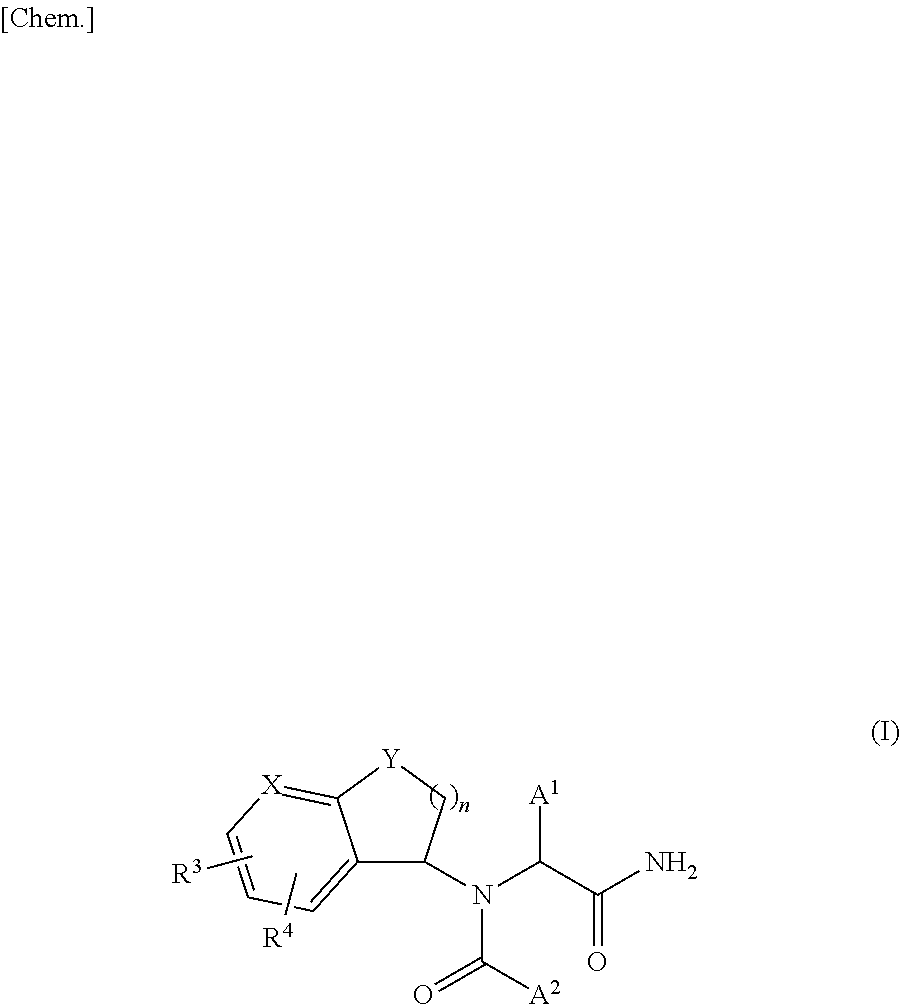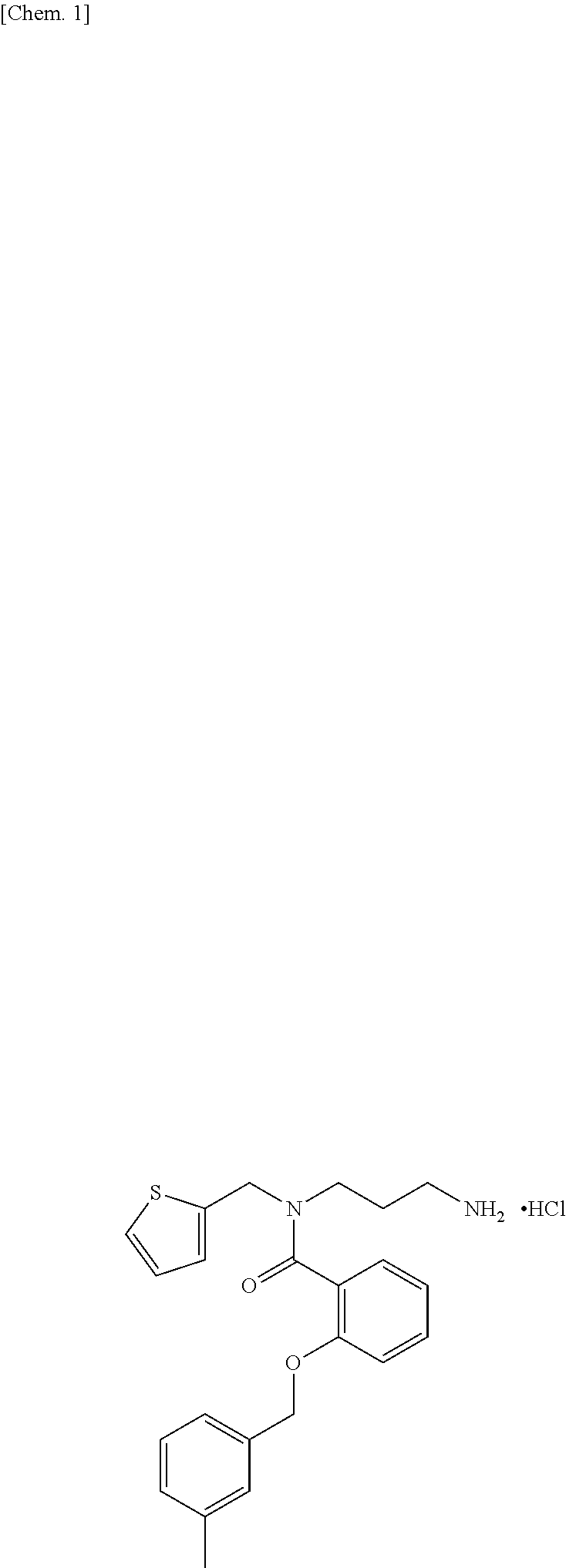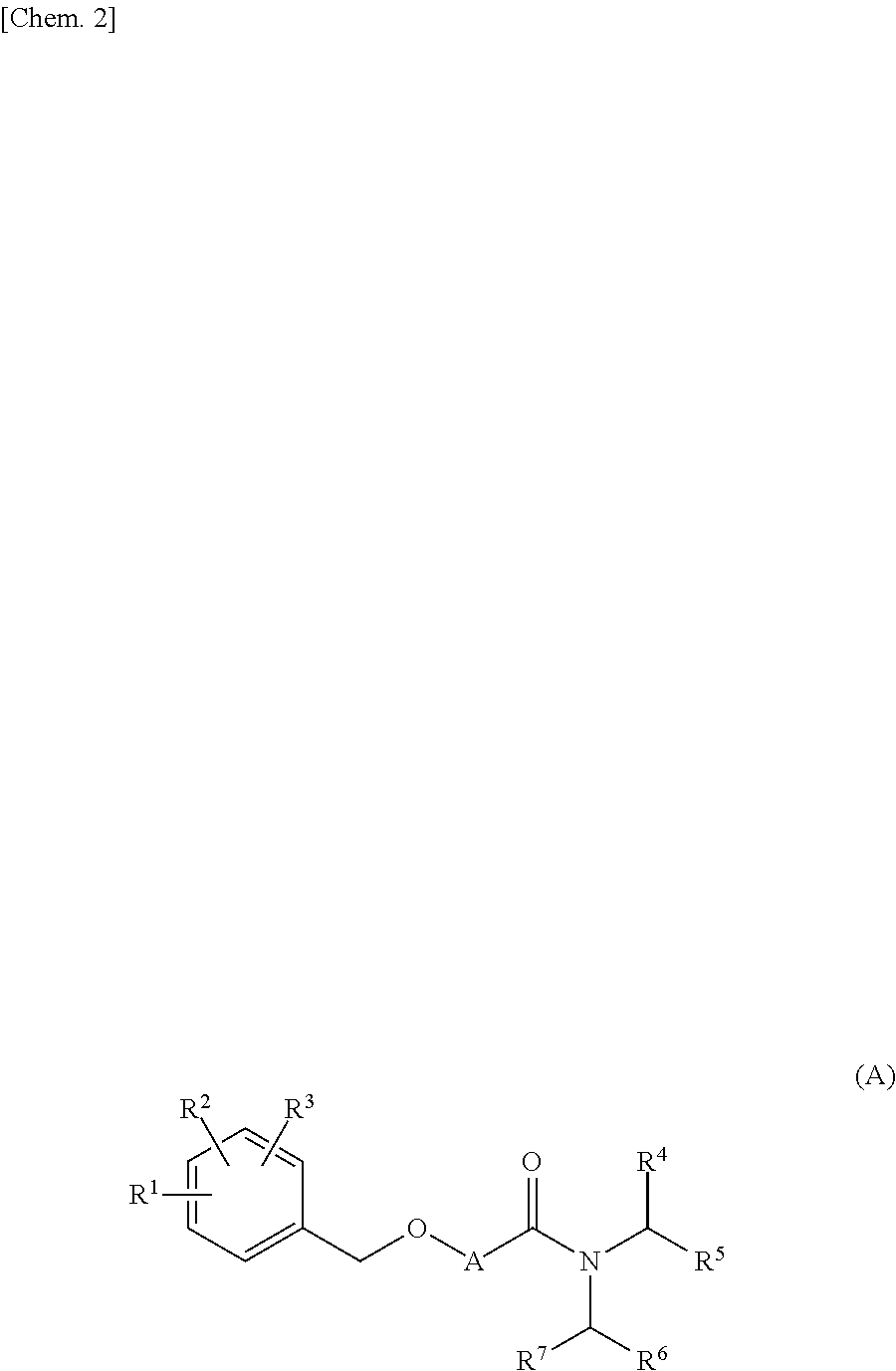α-Substituted glycinamide derivative
a technology of glycinamide and substituted glycinamide, which is applied in the direction of drug composition, immunological disorders, cardiovascular disorders, etc., can solve the problems of observing the decrease of the average blood pressure, and achieve the effect of potent inhibitory
- Summary
- Abstract
- Description
- Claims
- Application Information
AI Technical Summary
Benefits of technology
Problems solved by technology
Method used
Image
Examples
reference example 1-1
6-Cyclopropylindan-1-one
[0394]To a suspension of 6-bromoindan-1-one (0.60 g), cyclopropylboronic acid monohydrate (0.47 g), tricyclohexylphosphine (0.081 g) and tripotassium phosphate (2.11 g) in toluene (10 mL) and distilled water (0.5 mL) was added palladium(II) acetate (0.064 g), and the mixture was stirred for 1 hour at 150° C. under microwave irradiation. The reaction mixture was allowed to cool to room temperature, and water was added. The mixture was extracted with ethyl acetate. The organic layer was washed with brine, and dried over anhydrous magnesium sulfate, then filtrated. The filtrate was concentrated under reduced pressure. The residue was purified by silica gel column chromatography (eluent:ethyl acetate / n-hexane=0 / 100 to 20 / 80) to afford the title compound (0.462 g).
[0395]1H-NMR (CDCl3) δ: 0.68-0.75 (2H, m), 0.95-1.05 (2H, m), 1.90-2.00 (1H, m), 2.64-2.73 (2H, m), 3.05-3.13 (2H, m), 7.34-7.38 (2H, m), 7.40-7.43 (1H, m).
reference example 1-2
6-Cyclopropyl-4-fluoroindan-1-one
[0396]The title compound was synthesized in a manner similar to that of Reference Example 1-1 by using the corresponding starting material. The spectrum data of the title compound is shown as follows, and the structural formula is shown in Table 2.
[0397]1H-NMR (CDCl3) δ: 0.69-0.76 (2H, m), 0.99-1.07 (2H, m), 1.90-1.98 (1H, m), 2.67-2.75 (2H, m), 3.05-3.13 (2H, m), 7.02 (1H, dd, J=1.3, 9.9 Hz), 7.24 (1H, d, J=1.3 Hz).
reference example 2
4-Fluoro-6-vinylindan-1-one
[0398]A mixture of 6-bromo-4-fluoroindan-1-one (0.36 g), tetrakis(triphenylphosphine)palladium(0) (0.182 g), tributylvinyltin (600 μL) and toluene (6 mL) was stirred overnight under reflux. The reaction mixture was allowed to cool to room temperature, to the mixture were added an aqueous solution of 0.5 mol / L potassium fluoride and ethyl acetate, and the mixture was stirred for 0.5 hours at room temperature. The insoluble material was removed by filtration through a pad of Celite. The organic layer of the filtrate was washed with water and brine successively, and dried over anhydrous magnesium sulfate. The solvent was removed under reduced pressure, and the residue was purified by silica gel column chromatography (eluent:ethyl acetate / n-hexane=0 / 100 to 15 / 85) to afford the title compound (0.235 g). The structural formula is shown in Table 2.
[0399]1H-NMR (CDCl3) δ: 2.72-2.77 (2H, m), 3.11-3.17 (2H, m), 5.37 (1H, d, J=10.8 Hz), 5.81 (1H, d, J=17.5 Hz), 6.72 ...
PUM
| Property | Measurement | Unit |
|---|---|---|
| temperature | aaaaa | aaaaa |
| temperature | aaaaa | aaaaa |
| body weight | aaaaa | aaaaa |
Abstract
Description
Claims
Application Information
 Login to View More
Login to View More - R&D
- Intellectual Property
- Life Sciences
- Materials
- Tech Scout
- Unparalleled Data Quality
- Higher Quality Content
- 60% Fewer Hallucinations
Browse by: Latest US Patents, China's latest patents, Technical Efficacy Thesaurus, Application Domain, Technology Topic, Popular Technical Reports.
© 2025 PatSnap. All rights reserved.Legal|Privacy policy|Modern Slavery Act Transparency Statement|Sitemap|About US| Contact US: help@patsnap.com



